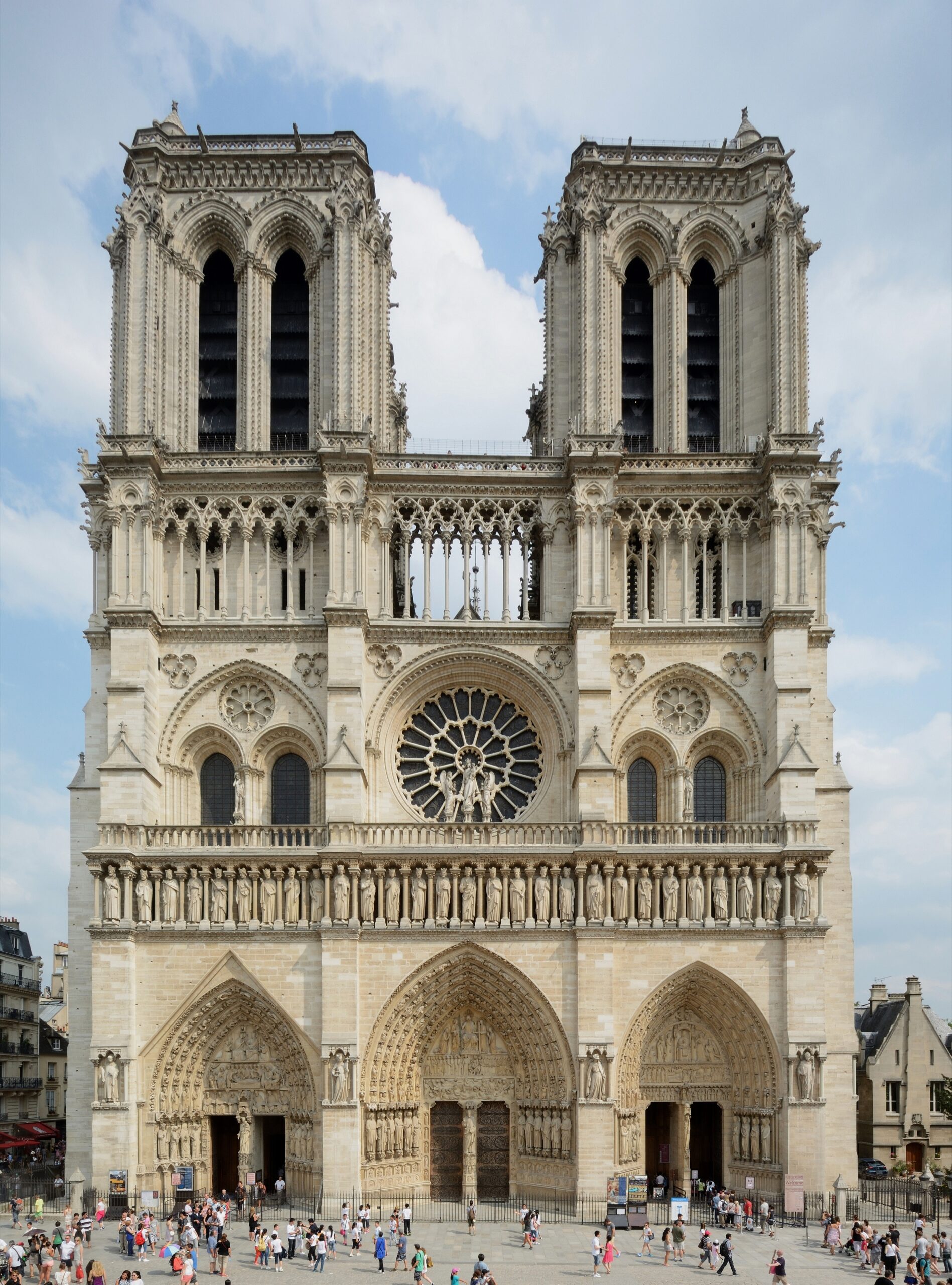Notre-Dame de Paris, often simply referred to as Notre-Dame, is undoubtedly one of the most iconic and beloved landmarks in Paris, France. This majestic cathedral stands as a masterpiece of French Gothic architecture, a testament to the ingenuity and craftsmanship of medieval builders, and a symbol of both spiritual and cultural significance.
Construction of Notre-Dame began in 1163 under the auspices of Bishop Maurice de Sully and continued for over a century, with subsequent generations of architects and artisans contributing to its grandeur. The cathedral’s design is characterized by its soaring towers, intricate stone carvings, and stunning stained glass windows, all of which reflect the architectural and artistic brilliance of the Middle Ages.
One of the most striking features of Notre-Dame is its façade, adorned with sculpted figures and elaborate decorations that depict scenes from the Bible and medieval life. The three iconic portals—the Portal of the Last Judgment, the Portal of the Virgin, and the Portal of St. Anne—are intricately carved with images of saints, angels, and demons, inviting visitors to contemplate the mysteries of faith and salvation.
The interior of Notre-Dame is equally breathtaking, with its vast nave, slender columns, and soaring ribbed vaults reaching upwards towards the heavens. The cathedral’s stained glass windows, dating from the 12th to the 14th centuries, flood the interior with a kaleidoscope of colored light, creating an atmosphere of ethereal beauty and reverence.
One of the most famous features of Notre-Dame is its magnificent rose windows, located on the west and north façades. These stunning circular windows, adorned with intricate tracery and vibrant stained glass, are among the finest examples of medieval craftsmanship in the world, inspiring awe and wonder in all who behold them.
Throughout its long and storied history, Notre-Dame has played a central role in the religious and cultural life of Paris. It has witnessed coronations, royal weddings, and state funerals, serving as a symbol of national identity and pride. The cathedral has also inspired countless works of art, literature, and music, including Victor Hugo’s famous novel “The Hunchback of Notre-Dame,” which brought renewed attention to the cathedral’s architectural and historical significance.
In April 2019, tragedy struck when Notre-Dame was ravaged by a devastating fire that caused extensive damage to its roof and spire. The world watched in horror as flames engulfed the iconic structure, threatening to destroy centuries of history and heritage. However, thanks to the heroic efforts of firefighters and the outpouring of support from around the globe, Notre-Dame was spared from complete destruction, and plans for its restoration and reconstruction are now underway.
The fire served as a stark reminder of Notre-Dame’s enduring importance as a symbol of resilience, hope, and the enduring power of human creativity. As Parisians and visitors alike continue to flock to this beloved landmark, they are reminded of the cathedral’s timeless beauty and the enduring legacy of faith and art that it represents. Notre-Dame de Paris remains a beacon of light and inspiration, standing as a testament to the enduring spirit of the city and its people.

